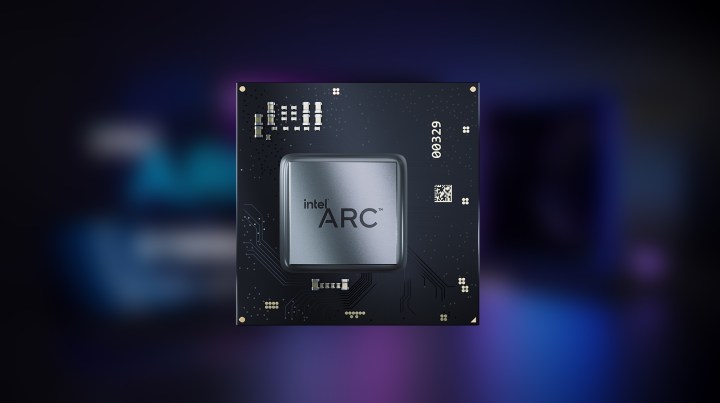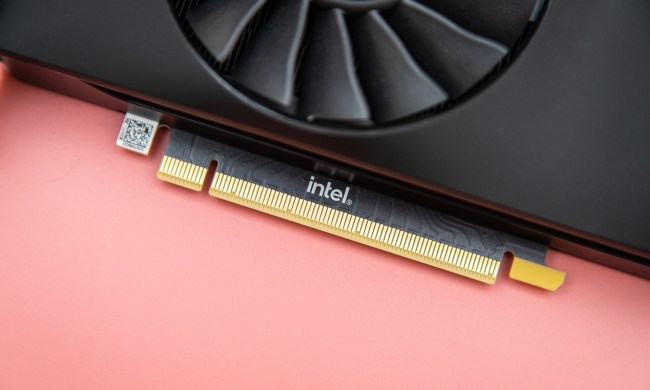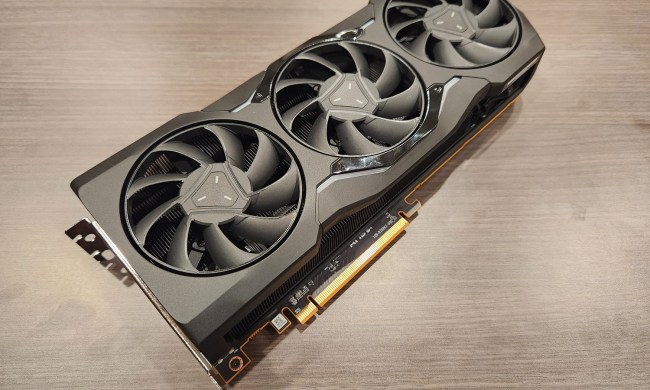YouTube channel Hardware Unboxed was able to find new information about Intel Arc Alchemist GPUs that could potentially give them an edge over AMD and Nvidia. This information was not shared by Intel during the GPUs’ release announcement on March 30.
According to the findings, it seems that Intel Arc has a higher transistor count than some Nvidia and AMD GPUs.

Intel shared some information about the Arc Alchemist GPUs, released yesterday, but certain details have been missing, such as the card’s transistor count and die size. However, Hardware Unboxed obtained both of these missing pieces and was able to confirm them to be true. This gives us a little more insight into the Arc graphics cards and their expected performance.
Intel’s laptop GPUs are split into two variants: The ACM-G10 and the ACM-G11. The G10 was previously referred to as DG2-512EU and is the top chip Intel will be offering, but it’s not launching until later this year, or as Intel said, “early summer.”
According to HardwareUnboxed, the Intel ACM-G10 is a 406 mm² die with 21.7 billion transistors. VideoCardz compared these numbers to those of the AMD Navi 22 GPU and the Nvidia GA104 GPU, both of which are Intel’s competitors for this graphics card. In both cases, Intel wins in terms of the number of transistors and die size: Navi 22 measures 336 mm² and has 17.2 billion transistors, while Nvidia GA104 has a 392 mm² die size with 17.4 billion transistors. This means that the Intel ACM-G10 GPU has a higher transistor density than its competitors, beating Nvidia by 20% and AMD by 6%.
The ACM-G11 GPU is smaller, measuring 157 mm², and comes with 7.2 billion transistors. In comparison, the AMD Navi 24 GPU has a 107 mm² die size and 5.4 billion transistors, while the Nvidia GA107 has around 200 mm², but this has never been officially confirmed.

It’s important to note that not all of these graphics cards are manufactured using the same process nodes. The ACM-G10 is made using TSMC’s N6 process, the AMD Navi 22 uses the N7 process, and Nvidia GA104 used a different foundry entirely, having been made using Samsung’s 8nm process. Comparing these numbers is therefore not all that straightforward.
On paper, the big desktop version of Intel Arc Alchemist is supposed to be a competitor to AMD Radeon RX 6700 and Nvidia RTX 3070. The information provided by Intel and discovered by Hardware Unboxed shows that this could be plausible. We won’t know this with any certainty until the Intel GPU is benchmarked upon its release, however. Intel was also rumored to release a midpoint between its budget and flagship GPU, one with 384 execution units (EUs), but it hasn’t been mentioned by Intel recently.
Today’s news is encouraging for Intel’s first discrete graphics card line, especially seeing as Intel is entering a market that is dominated by two giants and has been for years. Intel Arc’s breakthrough is not going to be easy. However, considering the ongoing GPU shortage and the fact that Intel plans to ship 4 million Arc GPUs this year alone, the company may still capture a lot of customers if it offers better prices and availability than Nvidia and AMD.




